Ensuring regular backups of your SQL Server database is essential for data protection and disaster recovery. Whether you prefer using SQL commands or SQL Server Management Studio (SSMS), this guide will walk you through both methods.
Backing Up a SQL Server Database Using T-SQL
If you want a quick and efficient way to back up your database, use the following SQL command:
-- Perform full backup of database BACKUP DATABASE [YourDatabaseName] TO DISK = N'C:\Backups\YourDatabaseName.bak' WITH FORMAT, COMPRESSION, STATS = 10;
That’s what I’m used to writing. I’ve no need to worry about the copy_only option these days, or check SQL Server Editions to see if I can use compression. Good times that was. Measuring available disk space against estimated backup sizes, and sometimes even adding temporary virtual disks to the server to accommodate the backup file size. The SQL statement for backups is simple… but there’s a lot to consider when performing a one. It just depends on the restrictions of the servers you are working with really.
Below is a simple run-through for backing up a database using the Back Up Database Wizard. As always, have a look at the manual first.
Backing Up a SQL Server Database Using SSMS
If you prefer a graphical approach, follow these steps.
1. Right click your database, select Tasks and click Back Up…
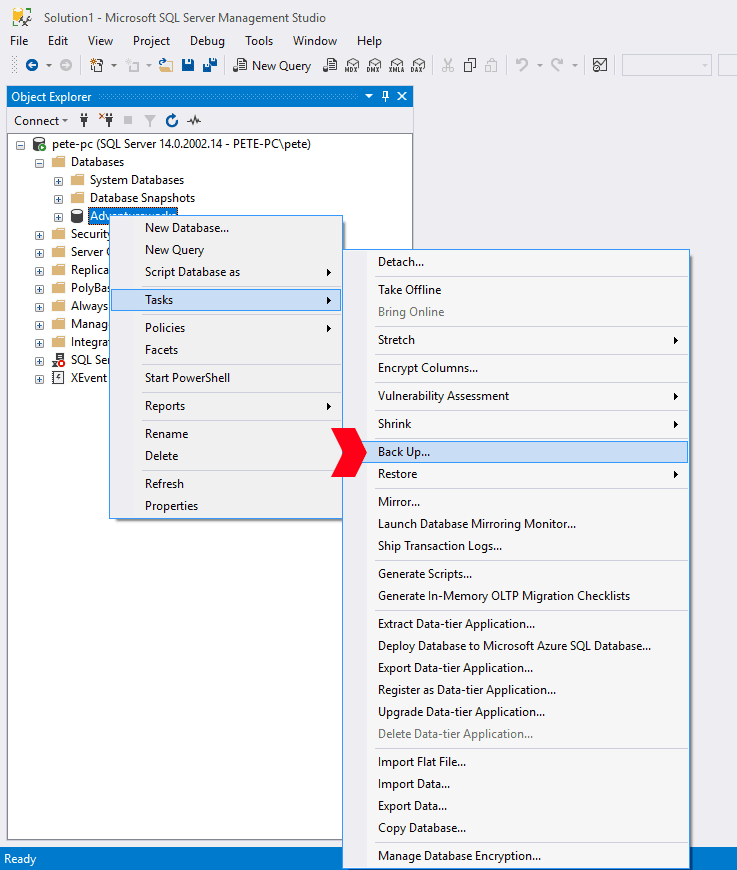
2. In the General tab of the prompted window you’ll see it’s already set-up for a Full Backup.
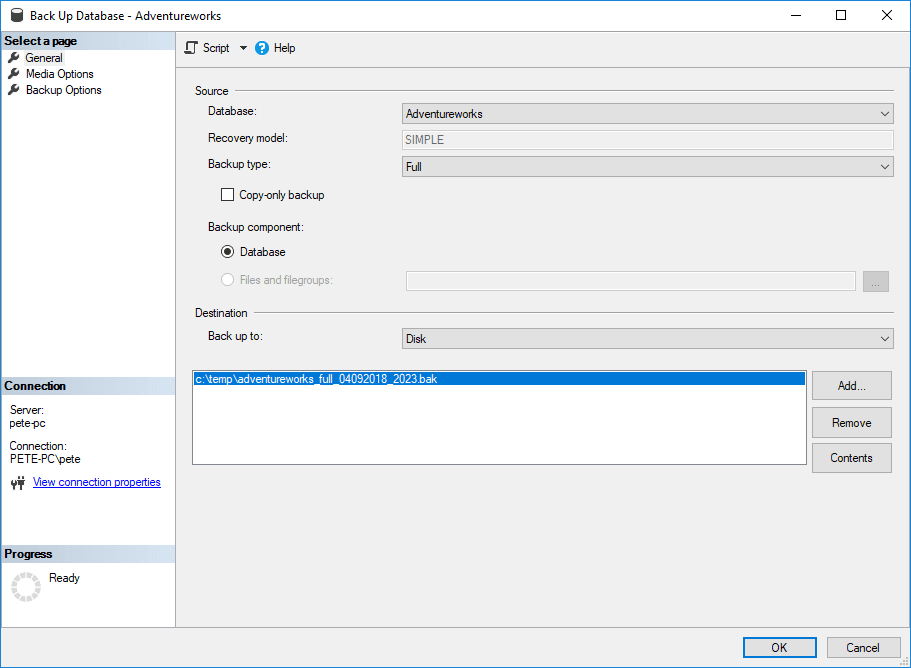
3. Choose a destination and specify a file name ending in .bak.
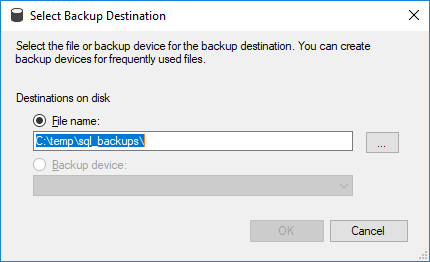

4. In Media Options, choose whether to verify the backup or perform checksum validation. Review all other available options too before you proceed to the next tab.
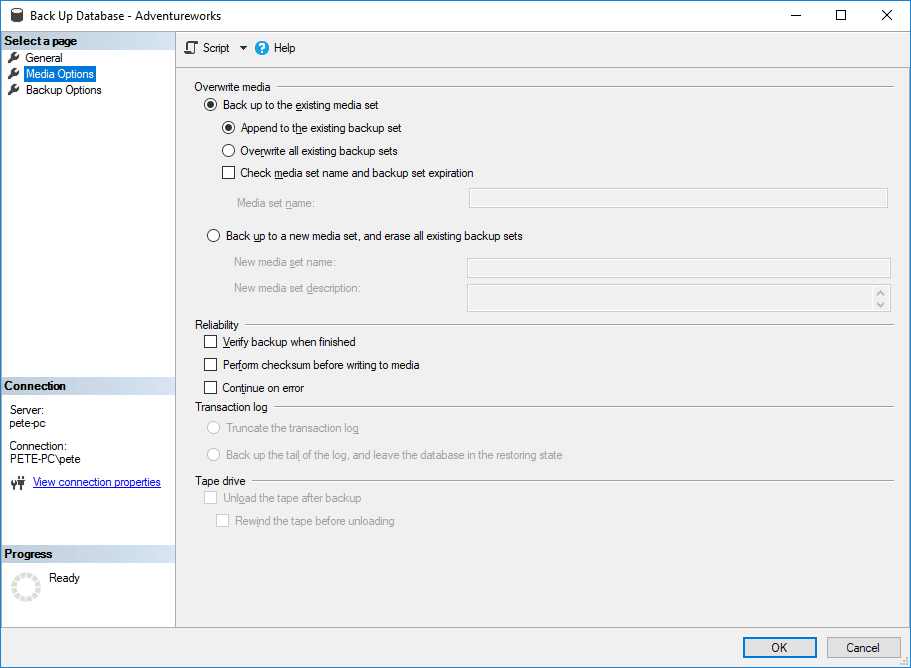
5. In Backup Options, enable compression if available.
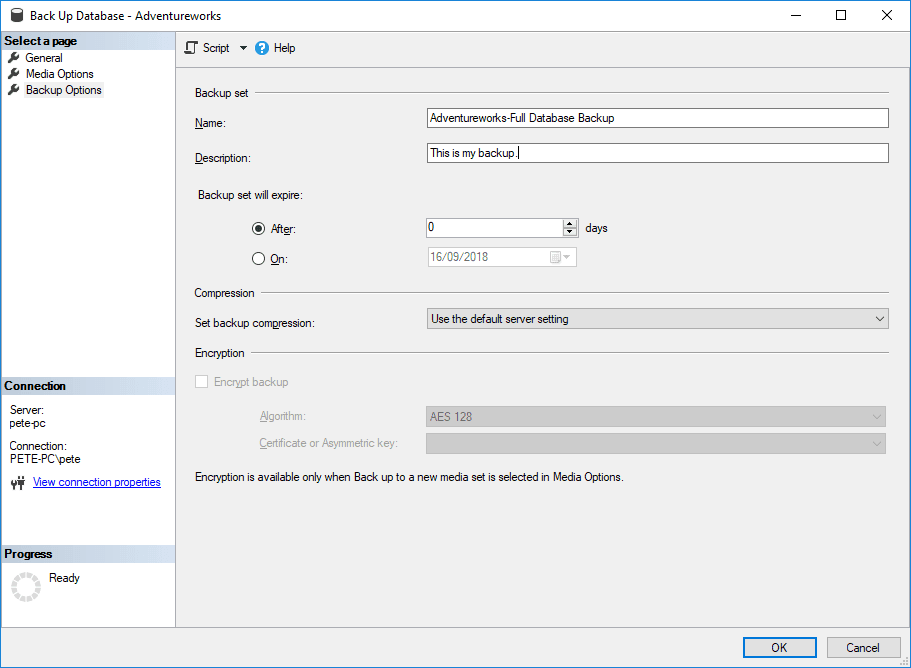
6. Click Script to generate the SQL script for the backup (optional).

7. Click OK to start the backup.

8. You should see a success prompt if done via SSMS GUI.

You have a backup of your database. I hope this was useful!
Leave a Reply